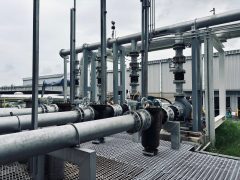As is the case in many business transactions, invoicing is one of the most important and time-consuming tasks in the purchasing process — vendors want to be paid in a timely fashion and buyers want to be sure they are getting what they paid for. Businesses have historically employed accounting professionals who process orders and invoices manually, and without an efficient process in place, the workload can quickly become overwhelming and lead to errors or unhappy customers.
“It’s all this back-and-forth documentation or communication that really, from an operational standpoint, creates the headache for the actual person sitting there trying to do dollars and cents,” said Shep Hickey, founder and CEO of Bryzos, an online marketplace for third-party buyers and sellers of steel products and accessories. The company acts as a middleman that handles negotiations, disputes and payments using automated invoicing technology.
Companies across many industries are finding automated invoicing a helpful alternative to manual operations, not only for the reduction in errors and time-consuming tasks, but also for the benefits that it can bring to the relationships between buyer and seller and added efficiencies in accounts payable (AP) and accounts receivable (AR) on both sides.
“If the steps are not choreographed or sequenced properly, you end up just doing the same things over again and the more time we can get a business looking in front of their business versus sweeping up what’s behind them, the more efficient they’re going to be as an enterprise,” Hickey said.
Reducing the Friction of Invoicing
Using automation in the invoicing process can eliminate much of the friction that organizations face and improve cash flow management. Beyond simply eliminating paperwork and errors, automation can lead to more operating capital, flexibility in payment terms, improved transparency of financial status and increased profitability down the road through repeat business between trusted business partners. Still, many businesses continue to use paper-based methods or several different AP/AR software solutions that do not communicate with each other.
“I think everybody who writes a check for business purposes inherently knows the benefits of doing something perhaps a little bit more streamlined, because they do it in their personal apps all the time,” Hickey said. “I think the reason they don’t do it [in business] is that it’s not barking at them loud enough, or it’s not showing that it leads to more profitability.”
Automated invoicing systems’ helpfulness starts upstream in the process, he said. From the point a customer places an order, purchase orders and sales orders get turned into packing lists, bills of lading and ultimately an invoice, all of which are prone to errors when done manually. A misplaced decimal point can set off a ripple effect in many different documents, for example, leading to delayed payments and orders as well as mounting dissatisfaction and mistrust between partners.
Automated invoicing systems not only process orders electronically and generate the required documents in a sales transaction, but they will also check the accuracy of the math involved, send the invoice electronically, handle the payment transaction between accounts and send the information to a firm’s enterprise resource planning (ERP) solution for processing and reconciliation.
The Future of Automated Invoicing
As more businesses replace outdated, manual invoice processes with automated solutions, Hickey said that companies will begin to use the freed bandwidth for better decision-making and to get more organized in their business dealings.
In the near term, he explained that businesses could begin to see improvements in their capital, supply chains and overall reputations by extending credit to trusted business partners, for example. An automated invoicing system can offer more transparency into the financial status and creditworthiness of a business, which can lead to better credit terms and ultimately more on-time payments.
“If a credit source can see all the way down the chain of invoices or purchase orders, then they can feel secure you’ve got a good business, and you probably pay your bills, so [they] feel a lot better,” he said. “My biggest hope is that, ultimately, companies find what works best for them.”
The most crucial part of any business transaction is arguably getting paid on time by the partners with which they do business. Simplifying the many moving parts between an order placed and a payment made with automation can speed up that process and keep everyone involved satisfied.




